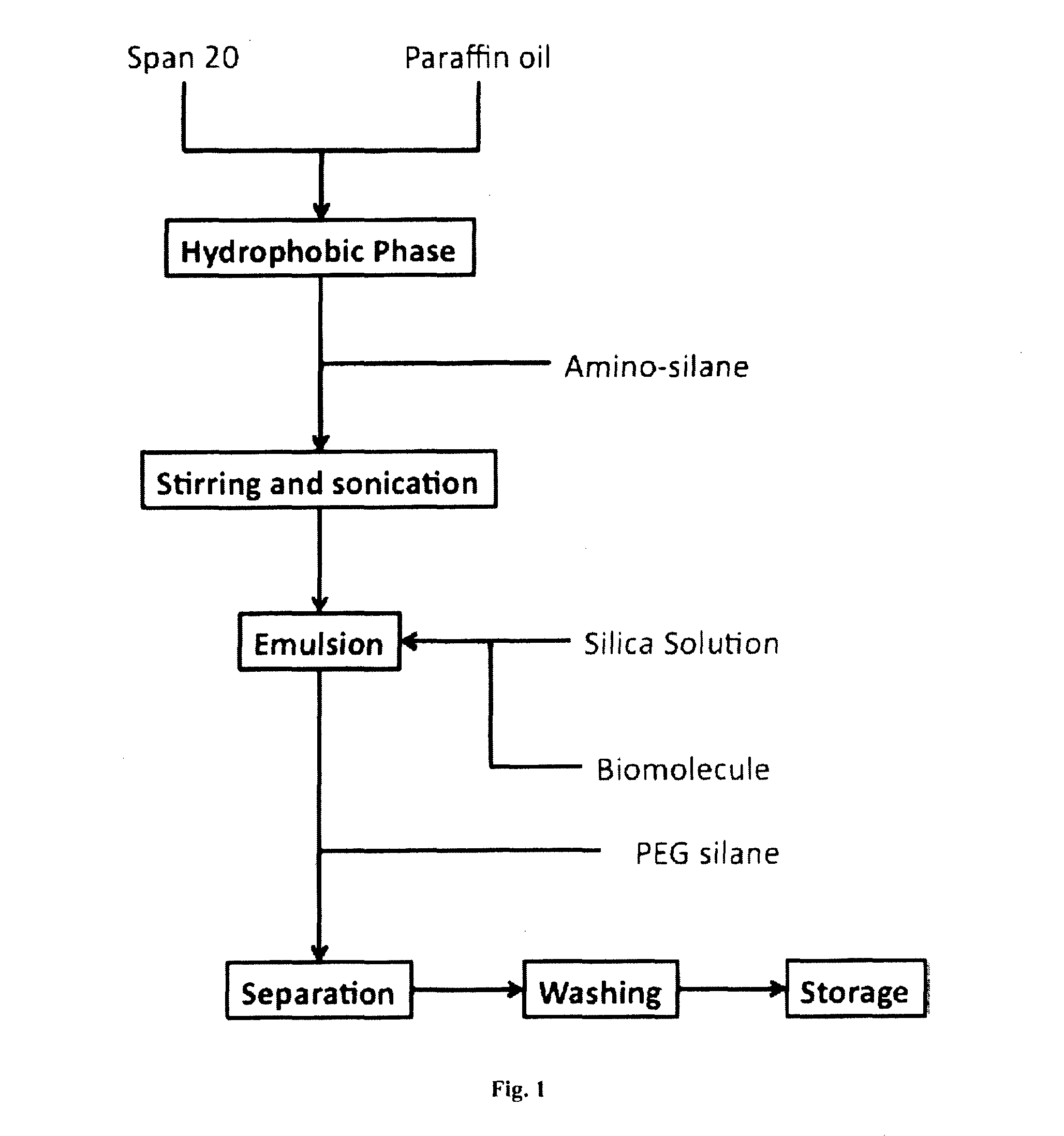Particulate substances comprising ceramic particles for delivery of biomolecules
a technology of biomolecules and ceramic particles, which is applied in the field of particles, can solve the problems of high cost of sirna therapy, difficult to put into practice, and risk of immunological reactions, and achieve the effect of facilitating endosomal escap
- Summary
- Abstract
- Description
- Claims
- Application Information
AI Technical Summary
Benefits of technology
Problems solved by technology
Method used
Image
Examples
example
FIG. 18
[0207]Encapsulation of siRNA into Particles Modified with DATMS, Rhodamine, and mPEG-5000:
[0208]15 g of Dowex 50W was stirred with 100 mL 5M HCl for 30 minutes to convert the resin to the active, protonated form. The resin was then recovered by vacuum-assisted filtration into a sintered-glass filter funnel, wherein it was washed twice with 100 mL milliQ water to remove residual HCl.
[0209]9 grams Span® 20 was weighed into a Teflon beaker and 60 mL liquid paraffin added. The resulting mixture was stirred for about 30 minutes to complete dissolution of the Span® 20 in the paraffin. 29 μL DATMS liquid and 6 μL 10% Rhodamine-APTES in 2-propanone was added to the stirred surfactant solution.
[0210]4.0 mL sodium silicate solution was added to 28 mL milliQ water. 8.0 mL of this solution was set aside for subsequent titration of main volume.
[0211]Using a pH probe to continually monitor the solution pH, activated cationic exchange resin was added to reduce the pH of the silicate mixture...
examples
FIG. 19
[0217]A. Microemulsion Synthesis of Particles for Biomolecule Encapsulation
[0218]0.381 g of NP9 was dissolved in 3 mL of cyclohexane (0.2 mol / L) by stirring (magnetic) in a glass vial and 0.065 mL of 1-pentanol subsequently added as a co-surfactant with continued stirring (0.2 mol / L). The resultant solution constituted the hydrophobic phase.
[0219]0.013 mL of 0.01M HNO3 was added to act as an acid catalyst, constituting the hydrophilic phase, and the solution stirred for 20 minutes to homogenise. This resulted in formation of a microemulsion.
[0220]0.018 mL of tetramethylorthosilicate (TMOS) was added and the resulting solution stirred for 66 hours to hydrolyse the TMOS and provide a hydrolysed precursor solution.
[0221]0.013 mL of 0.01M NaOH was added and stirred for 5 minutes to adjust the pH to greater than about 4.
[0222]Addition of a biomolecule was simulated by addition of 0.010 mL of water with stirring. As a functionalised ceramic precursor, 0.003 mL of 3-(2-aminoethylami...
PUM
| Property | Measurement | Unit |
|---|---|---|
| mean particle size | aaaaa | aaaaa |
| mean particle size | aaaaa | aaaaa |
| mean particle size | aaaaa | aaaaa |
Abstract
Description
Claims
Application Information
 Login to View More
Login to View More - R&D
- Intellectual Property
- Life Sciences
- Materials
- Tech Scout
- Unparalleled Data Quality
- Higher Quality Content
- 60% Fewer Hallucinations
Browse by: Latest US Patents, China's latest patents, Technical Efficacy Thesaurus, Application Domain, Technology Topic, Popular Technical Reports.
© 2025 PatSnap. All rights reserved.Legal|Privacy policy|Modern Slavery Act Transparency Statement|Sitemap|About US| Contact US: help@patsnap.com



